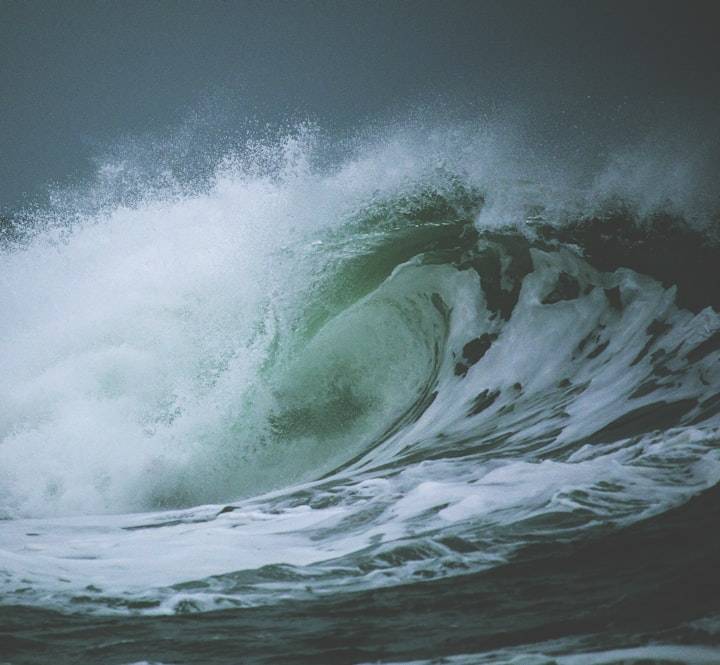Tsunamis and tidal waves are both natural phenomena related to the movement of water, but they are quite distinct in terms of their causes, behavior, and effects. Despite common misconceptions, the two are different and have varying levels of intensity. Understanding their origins, characteristics, and impact can help in preparing for and mitigating their potentially devastating consequences.
A tsunami is a series of large ocean waves that are typically caused by underwater earthquakes, volcanic eruptions, or landslides. The word "tsunami" comes from the Japanese language, where "tsu" means harbor and "nami" means wave, referring to the waves' impact on coastal harbors. Unlike normal waves caused by wind, tsunamis involve a sudden and massive displacement of water, typically due to seismic activity beneath the ocean floor.
When an underwater earthquake occurs, it causes a sudden vertical shift of the seafloor, which displaces a large amount of water. This displacement generates waves that can travel at speeds of up to 500 miles per hour in deep water. Because of their high speed and long wavelengths, these waves may go unnoticed in the open ocean, with only a small increase in water height. However, when these waves approach the coastline and reach shallow waters, their speed decreases, and their height increases dramatically, resulting in a massive surge of water.
Tsunamis typically come in a series of waves, with the first wave not always being the largest. The waves can strike multiple times over several hours, and their arrival can be unpredictable. The initial wave may recede, giving a false sense of safety, before a more powerful wave hits. The force of these waves can cause catastrophic damage to coastal communities, submerging entire cities, destroying infrastructure, and leading to significant loss of life. The 2004 Indian Ocean tsunami, triggered by a 9.1 magnitude earthquake off the coast of Sumatra, is one of the most devastating examples in recent history, claiming the lives of over 230,000 people across 14 countries.
Tidal Waves
Tidal waves, on the other hand, are often confused with tsunamis but are a different phenomenon altogether. The term "tidal wave" is actually a misnomer, as these waves are caused by the gravitational pull of the moon and the sun on the Earth's oceans. This gravitational force results in the periodic rise and fall of sea levels, known as tides. Tidal waves, or tidal currents, are the large waves that accompany the change in tides as the ocean's water level rises and falls.
Tidal waves are most noticeable along coastal areas where the difference between high and low tides is significant. These waves are generally predictable, as the timing of the tides is influenced by the position of the moon, sun, and Earth. Coastal communities often plan their activities around these regular tidal changes, and while tidal waves may be large and powerful, they do not have the same destructive potential as tsunamis.
Key Differences Between Tsunamis and Tidal Waves
The key differences between tsunamis and tidal waves lie in their causes, effects, and behavior:
Cause: Tsunamis are caused by underwater earthquakes, volcanic eruptions, or landslides, whereas tidal waves are caused by the gravitational pull of celestial bodies.
Frequency: Tsunamis are relatively rare but catastrophic events, while tidal waves are part of the regular, predictable tidal cycles.
Impact: Tsunamis are characterized by their large, destructive waves that can devastate coastal communities. Tidal waves, on the other hand, are less destructive, though they can cause localized flooding during extreme high tides.
Warning: Tsunamis are often unpredictable, especially in the absence of a large earthquake or tsunami warning system. Tidal waves, however, are part of the natural tidal cycle and can be anticipated with great accuracy.
Effects of Tsunamis and Tidal Waves on Coastal Areas
Tsunamis pose a severe threat to coastal regions due to their sudden onset and massive energy. In addition to the physical destruction of buildings, infrastructure, and natural habitats, tsunamis often result in long-term environmental and economic impacts. The destruction of crops, contamination of freshwater supplies, and loss of livelihoods for coastal communities can persist for years.
Tidal waves, while not as destructive, can still cause localized flooding, particularly in areas with low-lying coastlines. Extreme tidal events, such as "king tides," can inundate streets, homes, and other structures, leading to temporary disruptions. Over time, coastal erosion and changes in ecosystems can occur due to the constant rise and fall of tides.
IN THE END
In summary, tsunamis and tidal waves are both powerful oceanic phenomena, but they differ greatly in their causes, behavior, and impacts. Tsunamis are catastrophic events caused by seismic activity, capable of causing widespread destruction along coastlines. In contrast, tidal waves are regular and predictable fluctuations in water levels due to gravitational forces, which, while significant, do not typically carry the same destructive power. Understanding the differences between the two can help communities better prepare for and respond to these natural events. While tsunamis may strike with little warning and cause severe damage, tidal waves are part of the ongoing natural rhythm of the Earth's oceans.


